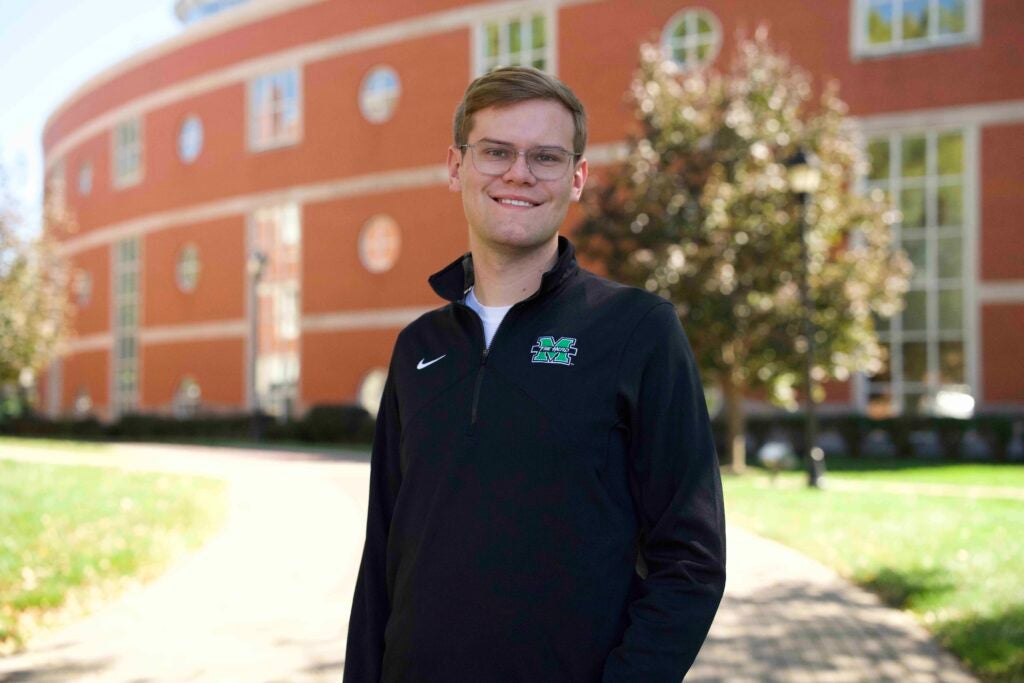Common Search Terms:

Marshall University News
What's happening at Marshall University
Recent Moments
 Helpers are human
Nov 24, 2025
Helpers are human
Nov 24, 2025
 A Marshall Family Foundation, an Athlete’s Drive, a Researcher’s Future
Nov 18, 2025
A Marshall Family Foundation, an Athlete’s Drive, a Researcher’s Future
Nov 18, 2025
 Full Circle at the Fountain
Nov 12, 2025
Full Circle at the Fountain
Nov 12, 2025
 Soldier. Mother. Survivor. Graduate.
Nov 10, 2025
Soldier. Mother. Survivor. Graduate.
Nov 10, 2025
 A First-Gen Journey of Healing and Hope
Nov 4, 2025
A First-Gen Journey of Healing and Hope
Nov 4, 2025
 Choosing Marshall
Oct 28, 2025
Choosing Marshall
Oct 28, 2025
 Finding Purpose Through Resilience
Oct 21, 2025
Finding Purpose Through Resilience
Oct 21, 2025
Upcoming Events
Thanksgiving dinner for ALL students
November 25
Students
Men’s Basketball vs. Lipscomb
November 26
Thanksgiving Holiday – University closed
November 27
Marshall University Football vs Georgia Southern – Senior Day
November 29
Rockin’ for Reading Holly Dolly Benefits Concert and Public Art Celebration
November 30
Finish Strong: Campus Support During Finals Week
December 01
Students,
Faculty & Staff
M1 Study Skills Session 8
December 01
Students
Bariatric Support Group
December 01
General Public
Holiday Concert
December 01
Finish Strong: Campus Support During Finals Week
December 02
Students,
Faculty & Staff
Recent News Releases
Marshall University welcomes two new appointments to Board of Governors
November 18, 2025
Featured Videos



Featured Photo Galleries
Share Your Story
Share your favorite Marshall Moment with us—whether it’s a meaningful memory, a proud achievement, or a special connection you’ve made at Marshall University. Your stories help capture the heart of the Herd and may be featured in future university projects, publications and campaigns. Submit your moment today and help us celebrate what makes Marshall so special!
More News
College of Arts and Media
Marshall to present Steve Martin’s ‘Picasso at the Lapin Agile’
November 12, 2025
Marshall School of Art & Design to present student art exhibits
October 31, 2025
Brass Band of the TriState to perform Oct. 21
October 17, 2025
Marshall to present ‘Found and Fabricated’ art exhibit
October 9, 2025
College of Business
Three Marshall students named University Innovation Fellows
November 7, 2025
Marshall welcomes Harvard Business School students
October 15, 2024
College of Education and Professional Development
Marshall professor selected for the Fulbright Specialist Roster
October 14, 2025
College of Engineering and Computer Sciences
Marshall cyber programs see record growth
September 10, 2025
College of Health Professions
College of Liberal Arts
College of Science
Marshall to host middle school summer science camps
May 29, 2025



